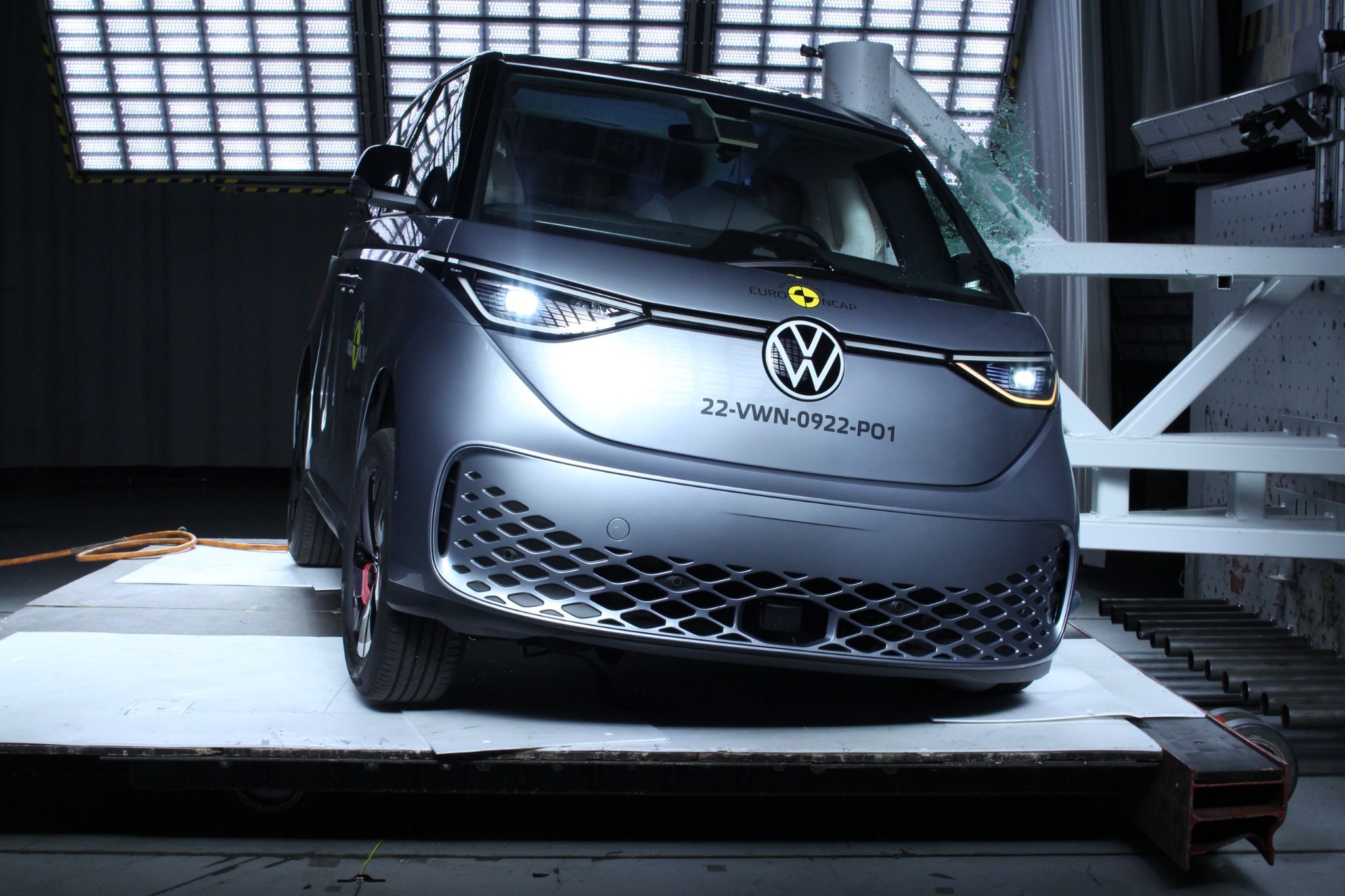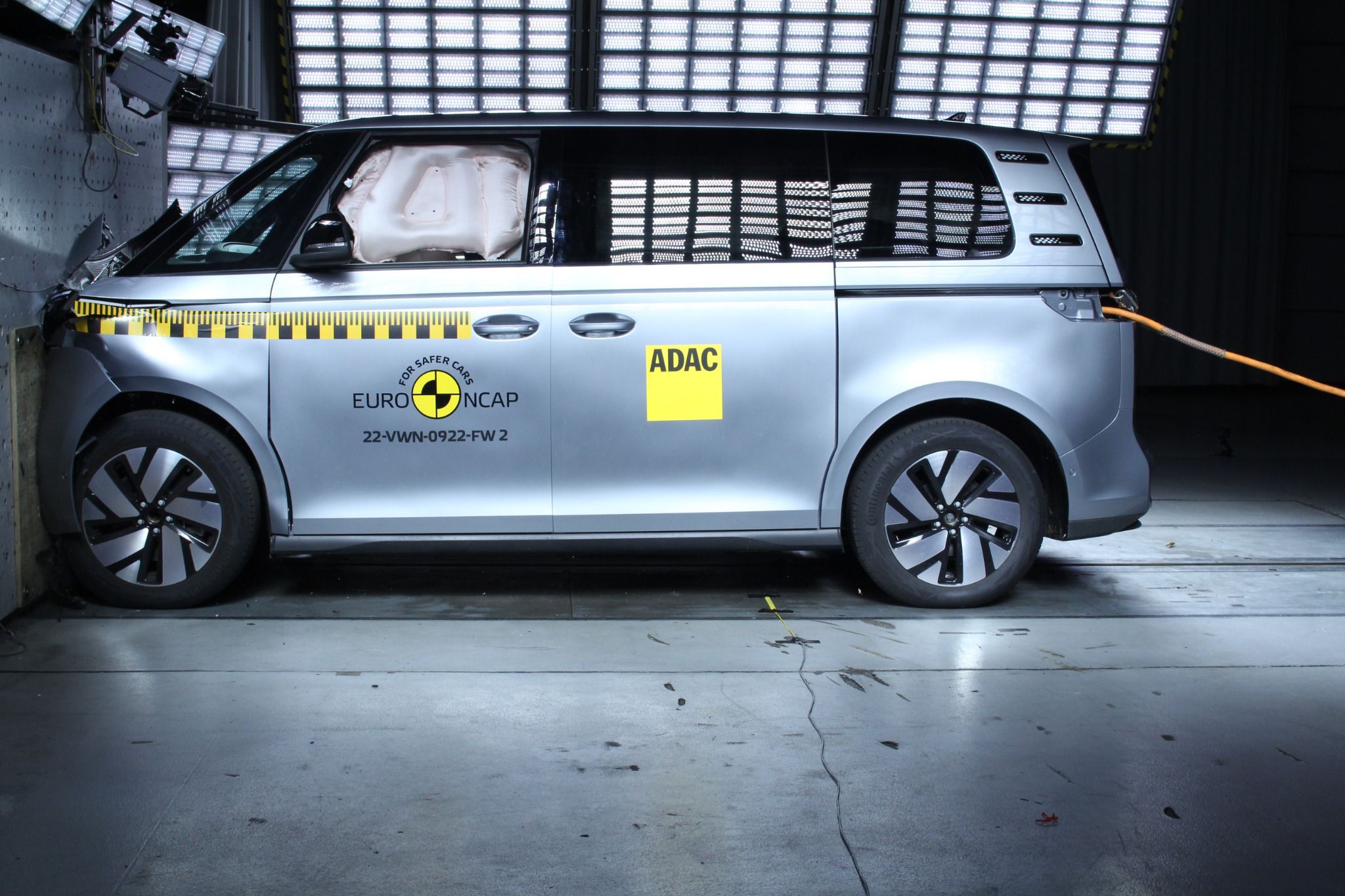Full five stars in the latest Euro NCAP
Volkswagen’s ID.Buzz electric bus has just been awarded a full five stars in the latest Euro NCAP safety tests. It performed impressively well across the board, receiving a 92 per cent grade for adult occupant protection and a 90 per cent for its safety assistance features.
Though that star system might be easy to work out, how does Euro NCAP get to its final decisions? That’s what we’re taking a look at today.

Adult Occupant Protection
Adult Occupant Protection is a key thing that Euro NCAP looks at when it comes to safety testing. A car’s overall score in this area is determined by how well it deals with frontal impact, lateral impact and whiplash tests.
These are performed to see how much protection is given to adult occupants in the event of the incidents, while a car is also assessed to see how easily occupants could be safely rescued and extracted from a vehicle following an impact.
Child Occupant Protection
Euro NCAP looks at three main areas when judging a car’s ability to offer child occupant protection.
It looks at the protection granted by the child restraint systems in front and side impact tests, as well as how easily different seized child seats can be fitted in a car. Finally, how many mounting points a car has is judged.
Euro NCAP looks at how many ISOFIX anchorage points a car has, if there’s a front seat airbag-disabling switch and how clearly it is labelled. These tests were first introduced back in 1997, but their most recent update was in 2016.
Vulnerable Road User Protection
A key part of the Euro NCAP testing procedure is how well a car can protect vulnerable road users, be that pedestrians or cyclists. Testers look at the potential risk to a pedestrian’s head, pelvis, upper and lower leg.
More recently, cars can gain additional points if they have an Autonomous Emergency Braking (AEB) system that can recognise both pedestrians and cyclists. In fact, only cars with AEB fitted will be able to score full marks.
Safety Assist
Modern cars are absolutely jam-packed with safety assistance equipment, which is why Euro NCAP tests it to work out its effectiveness in each new car. In their tests, Euro NCAP will look at how these systems perform during normal driving and ‘typical accident scenarios’.
Euro NCAP started testing AEB systems back in 2014 - and though the pedestrian and cyclist-detection systems are included as part of the vulnerable road users section - in the safety assist part of the testing procedure, Euro NCAP looks at AEB car-to-car technology that can help to avoid potential impacts and crashes. It also looks at speed assistance systems and emergency lane-keep technology.
